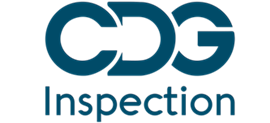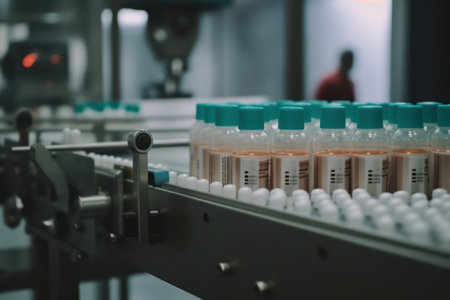A World Health Organization (WHO) Good Manufacturing Practices (GMP) audit is a comprehensive assessment conducted to evaluate compliance with international GMP standards in pharmaceutical manufacturing facilities. GMPs are guidelines that ensure the quality, safety, and efficacy of pharmaceutical products. These standards are designed to minimize risks and ensure that pharmaceutical manufacturing processes are consistent, controlled, and well-documented. WHO GMP audits play a crucial role in maintaining the integrity of pharmaceutical manufacturing processes and safeguarding public health.
Introduction to WHO GMP Audits:
WHO GMP audits are an integral part of the global effort to ensure that pharmaceutical products are produced, tested, and distributed according to established quality standards. These audits are conducted by the WHO in collaboration with national regulatory authorities, aiming to assess compliance with the guidelines outlined in the WHO GMP documentation. The ultimate goal of these audits is to assure the quality of medicines and their conformity to the required standards.
Audit Objectives:
The primary objectives of a WHO GMP audit include:
- Ensuring Product Quality: The audit assesses whether the manufacturing facility’s processes are designed to consistently produce pharmaceutical products that meet the required quality standards.
- Evaluating Process Control: The audit evaluates the facility’s adherence to established procedures and controls throughout the manufacturing process, from raw material procurement to product distribution.
- Verifying Compliance: The audit examines the facility’s compliance with international GMP guidelines as outlined in the WHO GMP documentation.
- Identifying Risks: The audit identifies potential risks and deviations from GMP standards that could impact the quality, safety, and efficacy of pharmaceutical products.
- Safeguarding Public Health: Ultimately, the audit aims to ensure that pharmaceutical products reaching patients are safe, effective, and of high quality.
Audit Process:
The WHO GMP audit process is thorough and systematic, involving several key steps:
- Pre-Audit Preparation: The manufacturing facility being audited provides relevant documentation to the audit team, including information about the facility, manufacturing processes, quality control procedures, and records of past inspections.
- Audit Team Selection: The WHO assembles a team of qualified auditors, often consisting of experts from various pharmaceutical and regulatory backgrounds. These auditors are trained to evaluate different aspects of pharmaceutical manufacturing.
- On-Site Audit: The audit team conducts an on-site inspection of the manufacturing facility. This involves reviewing documents, interviewing personnel, observing operations, and assessing the physical infrastructure.
- Document Review: The audit team reviews a wide range of documents, such as standard operating procedures (SOPs), batch records, validation reports, and quality control records. This review helps ensure that processes are well-documented and consistently followed.
- Interviews: Auditors conduct interviews with personnel at different levels of the organization to gain insights into the facility’s understanding and implementation of GMP principles.
- Process Evaluation: The audit team observes manufacturing processes in action, examining factors such as cleanliness, equipment maintenance, process validation, and control of critical process parameters.
- Quality Control: Auditors assess the facility’s quality control measures, including testing methods, sampling procedures, and compliance with specifications.
- Risk Assessment: The audit team identifies potential risks and deviations from GMP standards that could impact product quality and patient safety.
- Observation and Finding: Throughout the audit, the team records observations and findings, both positive and negative, related to GMP compliance.
- Closing Meeting: At the end of the audit, a closing meeting is held between the audit team and the facility’s management. Preliminary findings are discussed, and any questions or concerns are addressed.
Audit Criteria:
During the audit, the facility’s compliance with various GMP criteria is evaluated. These criteria cover a wide range of aspects, including but not limited to:
- Quality Management System: The facility’s quality management system is assessed, including document control, change control, deviation handling, and CAPA (Corrective and Preventive Action) systems.
- Personnel Training: The competency and training of personnel involved in manufacturing, quality control, and other critical functions are evaluated.
- Premises and Equipment: The facility’s physical infrastructure and equipment are inspected to ensure they are suitable for the intended manufacturing processes and properly maintained.
- Materials Management: Auditors review how the facility procures, receives, stores, and handles raw materials, packaging materials, and finished products.
- Production and Process Controls: Manufacturing processes, including formulation, blending, granulation, compression, coating, and filling, are evaluated for compliance with established procedures and controls.
- Validation and Qualification: The facility’s validation processes, including process validation, equipment qualification, and analytical method validation, are assessed.
- Cleaning and Sanitation: The audit considers the facility’s cleanliness, sanitation practices, and procedures for preventing cross-contamination.
- Quality Control and Laboratory Operations: The quality control laboratory’s equipment, methods, and procedures are reviewed to ensure accurate testing and reporting of results.
- Documentation: The facility’s documentation practices, including batch records, procedures, protocols, and reports, are evaluated for accuracy and completeness.
- Complaint Handling: The facility’s procedures for handling customer complaints and adverse events related to its products are assessed.
- Product Release: Auditors verify that products are released for distribution only after meeting established quality standards.
Audit Findings and Reporting:
After the audit is completed, the audit team compiles their observations and findings into an audit report. This report typically includes:
- Summary of Observations: A concise summary of positive and negative observations made during the audit.
- Compliance Status: An assessment of the facility’s compliance with GMP standards, including areas of compliance and areas that require improvement.
- Recommendations: Suggestions for corrective actions and improvements to address identified deficiencies and risks.
- Potential Impact: An evaluation of the potential impact of observed deficiencies on product quality, patient safety, and regulatory compliance.
- Timeframe for Corrective Actions: A timeline for the facility to address and rectify the identified issues.
Follow-Up and Continuous Improvement:
The audit report is shared with the facility’s management, and the facility is expected to develop and implement a corrective action plan within the specified timeframe. The WHO may conduct follow-up audits to verify that the corrective actions have been taken and that the facility is now in compliance with GMP standards.
Conclusion:
WHO GMP audits are a critical tool in ensuring the quality, safety, and efficacy of pharmaceutical products on a global scale. Through a comprehensive evaluation of manufacturing facilities, processes, and quality control measures, these audits play a vital role in maintaining the integrity of the pharmaceutical industry and safeguarding public health. By promoting compliance with international GMP standards, WHO GMP audits contribute to the availability of safe and effective medicines for patients worldwide.





